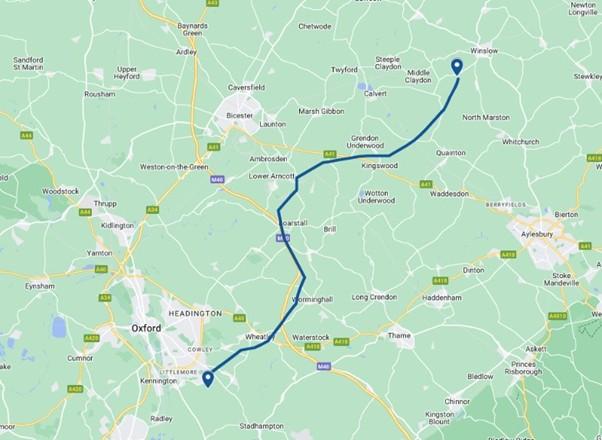Overview
National Grid Electricity Transmission (NGET) owns and maintains the electricity transmission network in England and Wales. We transport electricity from where it is generated, such as solar and offshore wind farms, to regional substations, where it then continues on its journey to homes and businesses.
To ensure that everyone can access electricity from renewable sources, we are working to build a cleaner, fairer, and more affordable energy system that serves everyone, and powers the future of our homes, transport and industry.
About Cowley to East Claydon Overhead Line Refurbishment
We are carrying out refurbishment works of the 400 kV overheard line (OHL), including downleads, between Cowley Substation, south of Oxford, and East Claydon Substation, near Winslow.
The refurbishment works are essential to maintain the resilience of our high voltage transmission network.
Contact Details
Please get in touch if you have any questions or comments on the Cowley to East Claydon Overhead Line Refurbishment.
Phone number: 0800 049 9734
Email: [email protected]
Permitted development
The Cowley to East Claydon refurbishment works will be undertaken via Permitted Development. As a statutory undertaker, NGET benefit from Permitted Development rights, granted by the Town and Country Planning Act 1990, which means no planning applications were required to approve the works. More information on these regulations can be found here.
The need for Cowley to East Claydon
The project is required to replace the existing cables and associated infrastructure (such as conductors and downleads) along the OHL, which are coming to the end of their useful life. Refurbishment works are required to ensure the reliable, long-term supply of electricity and support growing capacity needs along the transmission network, driven by increased renewable energy generation. Please note that this work will not require new pylons or the relocation of existing pylons along the overhead line.
Route location
Please see below our proposed route location map of where the OHL works are to be taking place:

Community benefits
As we continue to reduce our reliance on fossil fuels, and increase clean energy generation, we’ll be using more electricity than ever to support our everyday lives. This means we will need a grid that is able to carry the extra electricity to wherever we might need it. The government suggests that investment in onshore network infrastructure could support up to 130,000 jobs and contribute an estimated £4-11bn of GVA (gross value added) to Great Britain’s economy in 2050.
We are committed to working in collaboration with communities, stakeholders, suppliers and other parts of industry, to leave a lasting positive legacy by delivering community benefits in the areas that host our infrastructure. This could include, for example, supporting local community projects as well as delivering broader socioeconomic and environmental enhancements.
Our community benefits include:
- Opportunities for young people - we estimate our industry needs to recruit 400,000 jobs between now and 2050.
- Grid for Good – This is our flagship programme that helps increase access to training and employment opportunities for young people. We support students with career coaching and masterclasses.
- Community Grant Programme - When we are nearer to construction, our community grant programme will be open for applications from local charities and not for profit organisations to support local community initiatives.